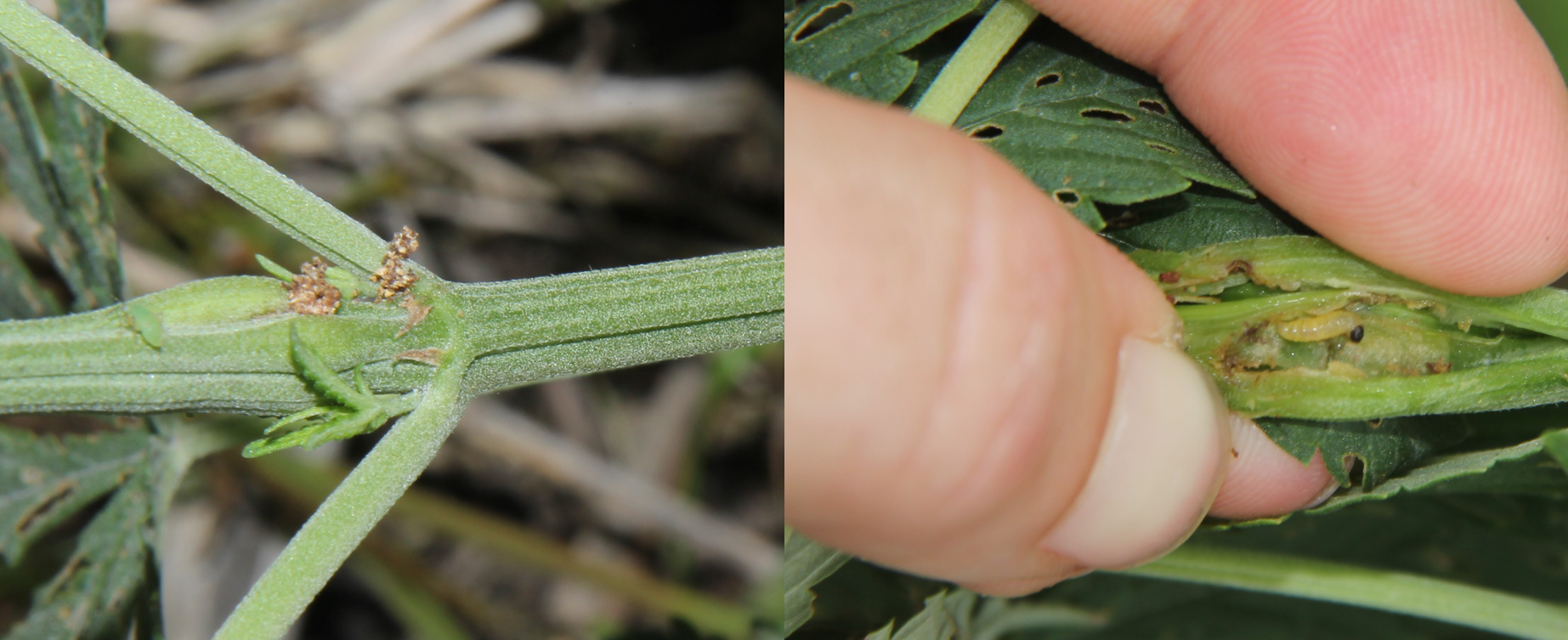The majority of hemp is in the ground and growers are now actively managing their plants. This could mean regularly scouting for diseases and pests (every grower should be out there scouting), managing weeds, and monitoring plant health. While there is a lot of feedback from growers on how the crop looks, there are a few key observations that I would like to bring up.
Be on the lookout for diseases. With the recent rain, heat, and humidity, we may have the perfect storm for diseases in hemp. Growers should scout after dew or rainfall has evaporated. Having a few paper bags is helpful to collect symptomatic leaves for disposal. Growers can also send plant tissue to Purdue Plant and Diagnostic Lab.
Insect pressure is variable across the state, but I am getting reports of minor feeding damage from Japanese beetle. While the extent of damage is not concerning yet, growers should be making notes of any damage they are observing. Eurasian hemp borer is abundant in feral hemp populations. The majority of hemp is not being grown where I am scouting, but there are feral populations around the state that may have borers. Growers still need to check plants for signs of borer damage because it can be very destructive.

Any easy way to look for Eurasian hemp borer is to check for bulges in the stem and frass on the outside. If you are willing to sacrifice the branch or stem, you can cut it open to find the larvae.
Weed pressure may be high in some fields, especially for those that direct seeded within the last two weeks or started out with weedy fields. Cannabinoid growers do have two herbicide options for between row applications, which can be at https://www.oisc.purdue.edu/pesticide/pdf/pest_hemp_product_list.pdf.
Office of Indiana State Chemist has made the 2019 Research Report available at https://www.oisc.purdue.edu/hemp/annual_reports.html. There is a lot of useful information that we will build upon after the 2020 season is over. Be sure to check it out.
I hope everyone has a wonderful holiday weekend!



